Abstract
Ovarian toxicity and/or carcinogenicity has been documented for at least eight chemicals recently tested in National Toxicity Program prechronic and chronic rodent studies. The chemicals that yielded treatment-related ovarian lesions were 1,3-butadiene, 4-vinylcyclohexene, vinylcyclohexene deipoxide, nitrofurantoin, nitrofurazone, benzene, delta-9-tetrahydrocannabinol, and tricresylphosphate. Typical nonneoplastic ovarian changes included hypoplasia, atrophy, follicular necrosis, and tubular hyperplasia. The most commonly observed treatment-related neoplasms were granulosa cell tumors and benign mixed tumors. A relationship between antecedent ovarian hypoplasia, atrophy, and hyperplasia and subsequent ovarian neoplasia is supported by some of these National Toxicology Program studies. Pathologic changes in other tissues such as the adrenal glands and uterus were associated with the treatment-related ovarian changes.
Full text
PDF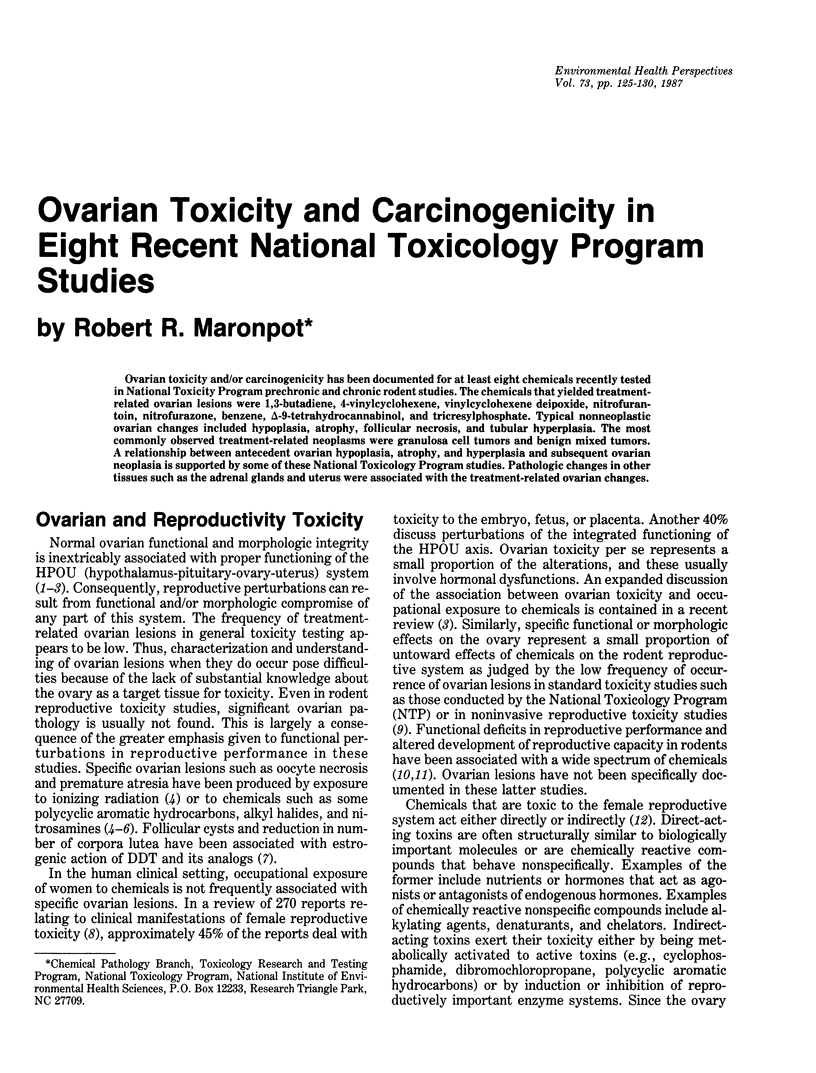

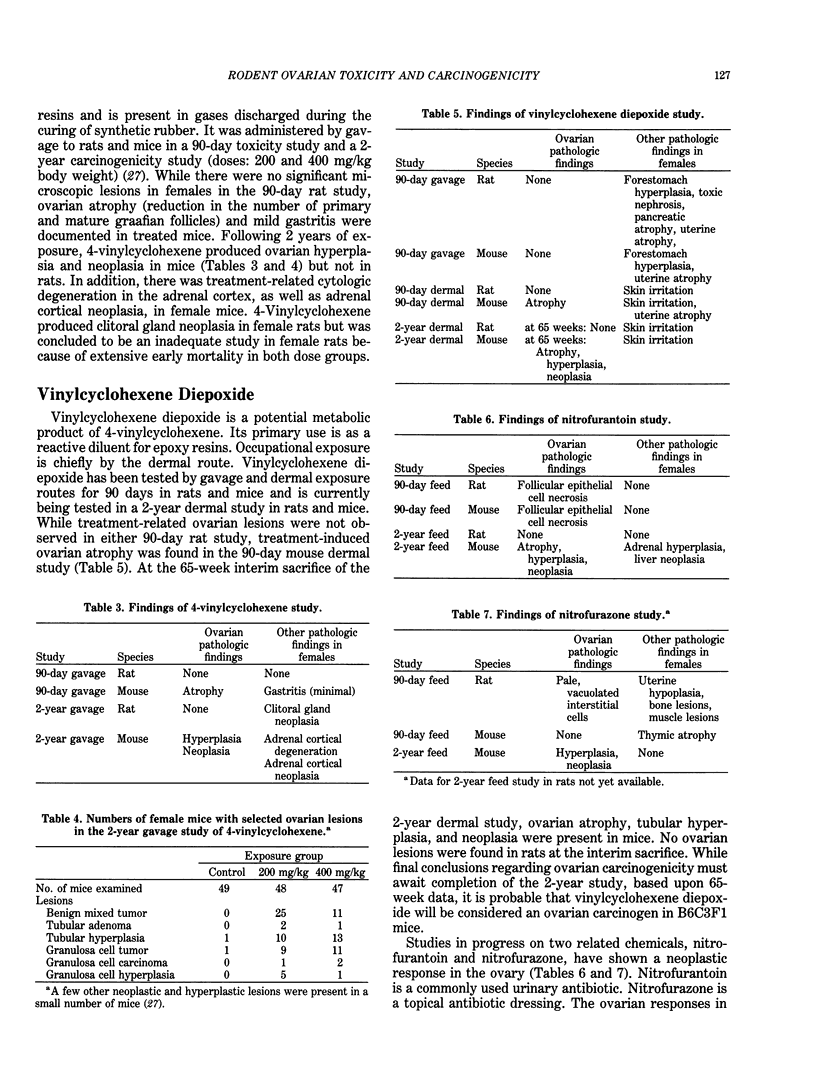
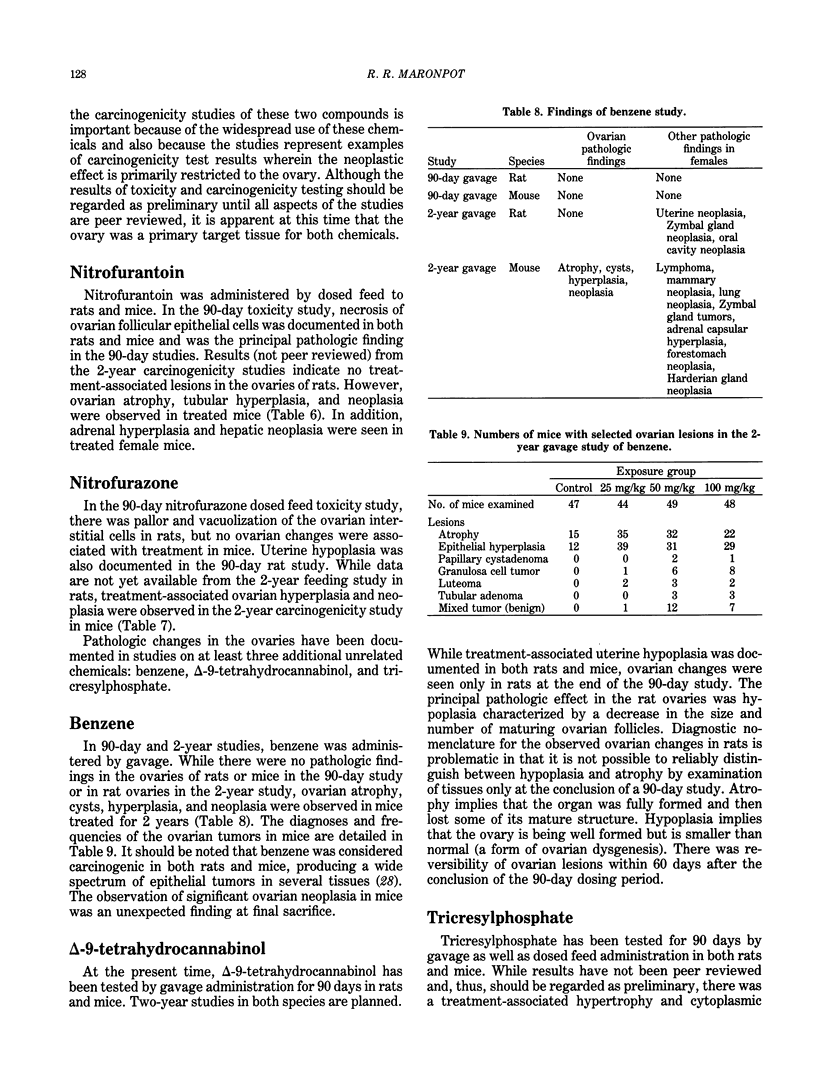
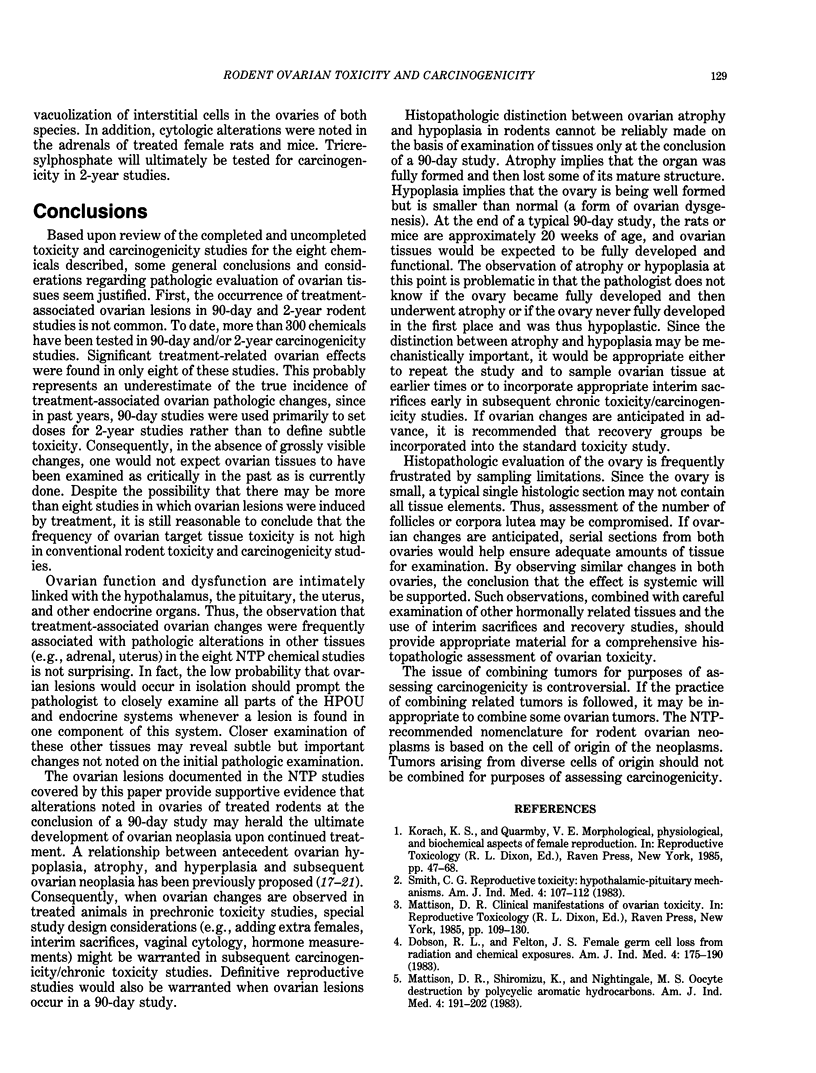
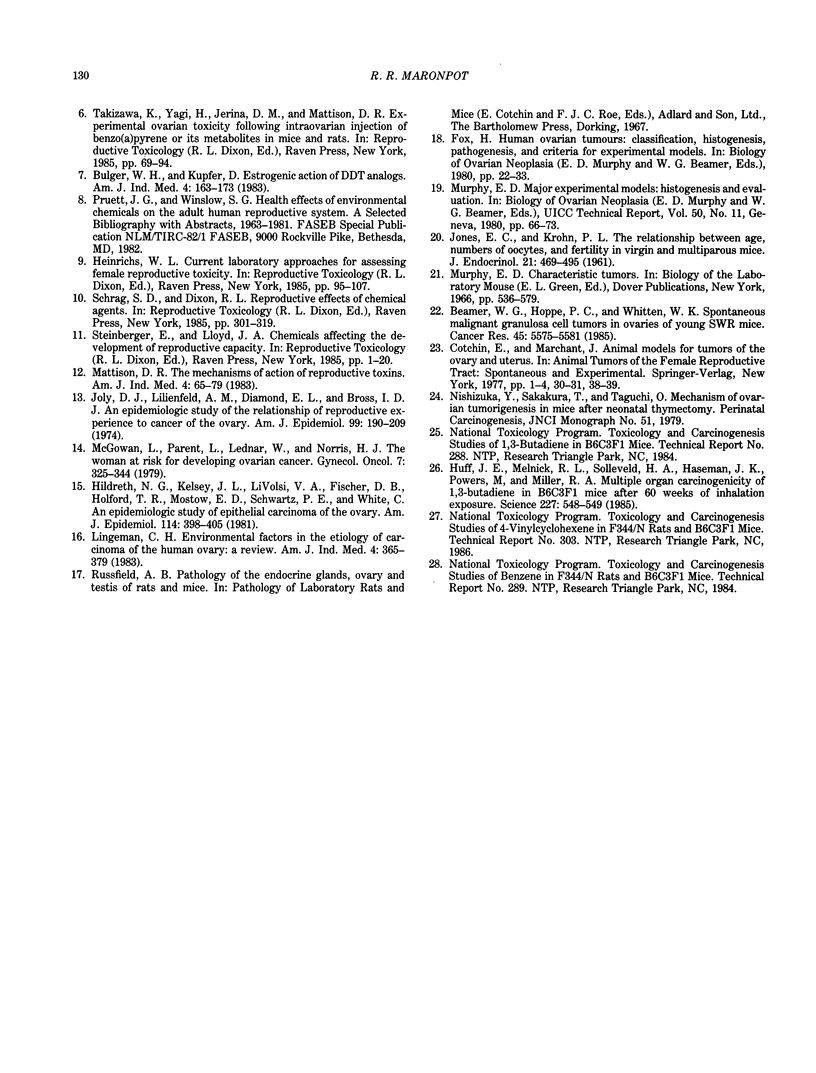
Selected References
These references are in PubMed. This may not be the complete list of references from this article.
- Beamer W. G., Hoppe P. C., Whitten W. K. Spontaneous malignant granulosa cell tumors in ovaries of young SWR mice. Cancer Res. 1985 Nov;45(11 Pt 2):5575–5581. [PubMed] [Google Scholar]
- Bulger W. H., Kupfer D. Estrogenic action of DDT analogs. Am J Ind Med. 1983;4(1-2):163–173. [PubMed] [Google Scholar]
- Dobson R. L., Felton J. S. Female germ cell loss from radiation and chemical exposures. Am J Ind Med. 1983;4(1-2):175–190. [PubMed] [Google Scholar]
- Hildreth N. G., Kelsey J. L., LiVolsi V. A., Fischer D. B., Holford T. R., Mostow E. D., Schwartz P. E., White C. An epidemiologic study of epithelial carcinoma of the ovary. Am J Epidemiol. 1981 Sep;114(3):398–405. doi: 10.1093/oxfordjournals.aje.a113207. [DOI] [PubMed] [Google Scholar]
- Huff J. E., Melnick R. L., Solleveld H. A., Haseman J. K., Powers M., Miller R. A. Multiple organ carcinogenicity of 1,3-butadiene in B6C3F1 mice after 60 weeks of inhalation exposure. Science. 1985 Feb 1;227(4686):548–549. doi: 10.1126/science.3966163. [DOI] [PubMed] [Google Scholar]
- JONES E. C., KROHN P. L. The relationships between age, numbers of ocytes and fertility in virgin and multiparous mice. J Endocrinol. 1961 Feb;21:469–495. doi: 10.1677/joe.0.0210469. [DOI] [PubMed] [Google Scholar]
- Joly D. J., Lilienfeld A. M., Diamond E. L., Bross I. D. An epidemiologic study of the relationship of reproductive experience to cancer of the ovary. Am J Epidemiol. 1974 Mar;99(3):190–209. doi: 10.1093/oxfordjournals.aje.a121603. [DOI] [PubMed] [Google Scholar]
- Lingeman C. H. Environmental factors in the etiology of carcinoma of the human ovary: a review. Am J Ind Med. 1983;4(1-2):365–379. [PubMed] [Google Scholar]
- Mattison D. R., Shiromizu K., Nightingale M. S. Oocyte destruction by polycyclic aromatic hydrocarbons. Am J Ind Med. 1983;4(1-2):191–202. [PubMed] [Google Scholar]
- Mattison D. R. The mechanisms of action of reproductive toxins. Am J Ind Med. 1983;4(1-2):65–79. [PubMed] [Google Scholar]
- McGowan L., Parent L., Lednar W., Norris H. J. The woman at risk for developing ovarian cancer. Gynecol Oncol. 1979 Jun;7(3):325–344. doi: 10.1016/0090-8258(79)90111-2. [DOI] [PubMed] [Google Scholar]
- Smith C. G. Reproductive toxicity: hypothalamic-pituitary mechanisms. Am J Ind Med. 1983;4(1-2):107–112. [PubMed] [Google Scholar]


